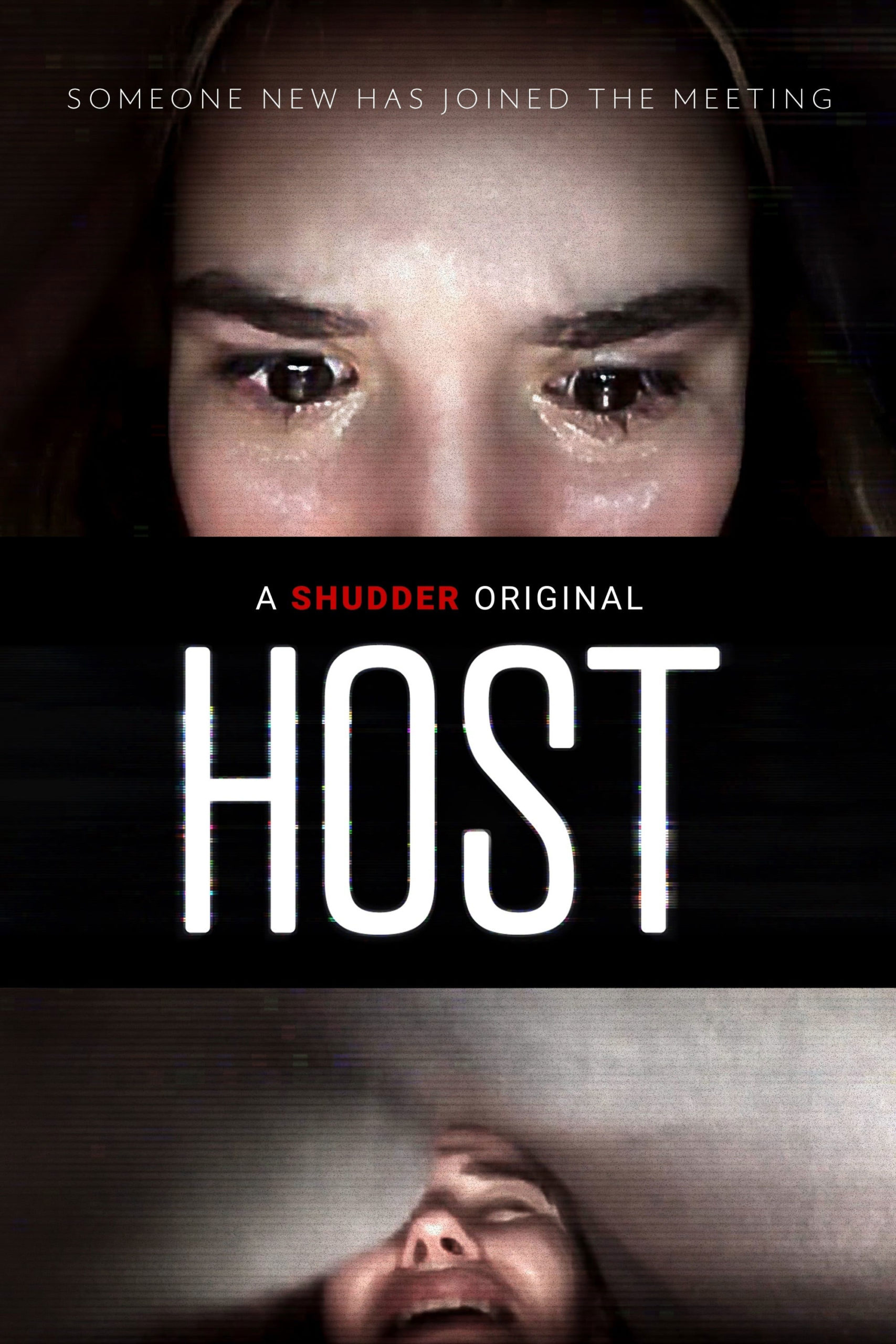What a cool, frightening, compact horror flick. Host, filmed in, and released during, this ongoing Covid pandemic is also a film that is of its time — a document of how we have been living, while it has been happening. This little film might, someday, have historical significance. That’s pretty good for what’s basically a haunted house story.
By way of England, Host comes from director Rob Savage and screenwriters Savage, Gemma Hurley, and Jed Shepherd. Inspired by a short film from Savage, Host is a quarantine Zoom call among five friends — Haley (Haley Bishop), Jemma (Jemma Moore), Emma (Emma Louise Webb), Radina (Radina Drandova), and Caroline (Caroline Ward). There’s a sixth, Teddy (Edward Linard), who leaves the call before the plot gets rolling.
Haley has arranged for a psychic medium, Seylan (Seylan Baxter), to join the call and host a séance. As far as Seylan knows, it is the first multi-location séance ever done. Of course, things go poorly.
Seylan warns before the call starts that the participants need to treat the ceremony seriously, otherwise the spirits might be angered. Blame Jemma for all that happens next. She jokes around, pretending she’s experiencing something spectral. Afterwards, Seylan is disconnected and spooky stuff begins to happen to the other participants in the call. At all remaining five locations, the women are being messed with by something.
It’s the usual stuff in a ghost flick. There is some loud banging, stuff moving around on its own or breaking — there’s even an apparition. It’s familiar ghostly shenanigans, but that doesn’t mean it isn’t effective in frightening an audience. It’s all in how it was filmed.
In Zoom calls, views from participants’ cameras are arranged in a grid on the user’s screen. It’s a video chat. Savage chose to present the entire film as a 50-minute Zoom call, user interface and all. The only time the multiscreen view isn’t present for the  viewer is when Savage would choose to show only a single camera’s view. The timing of these switches is considered and deliberate, as they are used when Savage wants the viewer to focus on only one participant’s camera view. A viewer can’t help but realize something important is about to happen, ratcheting up the tension. They also serve as scene breaks for the other participants in the call. Without those breaks, Savage and editor Brenna Rangott would have been forced to weave his film together from very lengthy takes. So, switching the cameras around was storytelling, and a technical necessity.
viewer is when Savage would choose to show only a single camera’s view. The timing of these switches is considered and deliberate, as they are used when Savage wants the viewer to focus on only one participant’s camera view. A viewer can’t help but realize something important is about to happen, ratcheting up the tension. They also serve as scene breaks for the other participants in the call. Without those breaks, Savage and editor Brenna Rangott would have been forced to weave his film together from very lengthy takes. So, switching the cameras around was storytelling, and a technical necessity.
The coronavirus also had a role in the production, beyond being part of the film’s world. This movie was made during this summer’s quarantine. Cast and crew members were subject to the same restrictions as everyone else. Because of this, the cast members took on a larger role in the filmmaking process, setting up some of their own shots and effects. Much heavy lifting was done with CGI, as well. The quality of the Zoom call is lo-fi, aiding the believability of CGI funded with what had to be a miniscule budget. All films are a team effort, but the pandemic forced many, if not all, of the cast and crew of Host to take on production roles they normally would not have. Despite this, there aren’t the accompanying dips in quality here and there one would expect from a project with a more even distribution of expertise.
But the best part of this film are the main members of the cast. The five somehow manage to have great chemistry over the Zoom call, when none of them were in the same room while filming. I imagine they weren’t in the same time, either. Yet, they all seem like old friends. Also, much of the film, visually, are closeup shots of these five women in the grid layout. That makes their reactions and emotions key to the film. Their faces just take up so much real estate that they have to act as visual cues for what the audience should be feeling. In other words, their cries and their frightened visages do just as much as the ghost effects to manipulate the viewer into stress and fear.
Savage also threw in some jump scares. They do that, but shock is not the same as fear. It’s the only place where he went cheap with the storytelling, but it doesn’t do much to mar the film.
Host is a gimmicky film, sure. It’s also not a new gimmick. One of the short films in V/H/S, from 2012, also used a video chat as its basis. This film is more impactful, I think, because of the circumstances in which we are all still living. And it’s all made better by the scary stuff.
